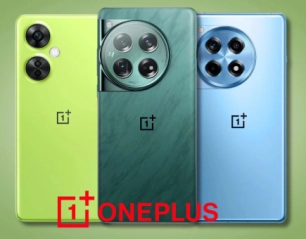There is no doubt that technology is a field of varying trends – at one moment someone emerges as a huge giant with all the influences and achievements and sometimes they crash with the same speed. The new kings of invention: Once viewed as virtual giants, these innovative forces have changed and defined the modern world in countless ways. However, from domination to decline is not an instant development but from the critical events that signify changes in matters to do with innovation and competition in a firm and the market at large. This article gives a glimpse into the stories of some of these tech giants whose rise to the top was nothing short of meteoric while in some cases it marks the beginning of their fall.
The Rise of Industry Giants
Following is the rise of the different Companies in the market.
IBM: The Early Titan
International Business Machines Corporation (IBM) is a significant and prominent milestone in the evolution of computing. IBM is a global information technology company founded in 1911; majoring in the production of computer hardware and related software products and services. From the 1960s to 1970s it was IBM mainframe computers that emerged as the best machines, therefore, getting the nickname “Big Blue”. IBM introduced the System/360 computer system which streamlined business through computer systems and set the standards for future computers.
Microsoft: The Software Revolution
The mid-70s saw a couple of young dreamers, Bill Gates and Paul Allen, start their now extremely famous Microsoft. Their agenda was to see that every individual has a computer in his or her office as well as at home and this was a major dream which might have sounded crazy at that time. The group’s big breakthrough was the development of the MS-DOS operating system for the IBM personal computer (PC). The subsequent evolution of Windows put the company in a commanding position at the head of the software provider niche for personal computer apparatuses throughout the 1980s and 1990s.
Apple: The Innovator
Another company that is offering competition to the same market is Apple Inc. It was started in 1976 by Steve Jobs, Steven Wozniak, and Ronald Wayne but the company has been able to establish for itself a place in the market by its innovation and design. After a lot of work, Apple released the first personal computer with a graphic user interface – the Macintosh, in 1984. Then the company hired the late Steve Jobs in 1996 as the main manager and the company introduced the iPod in 2001 the iPhone in 2007 and the iPad in the year 2010 mass changes in the markets were experienced through innovation and the world recognized Apple as one of the most innovator organizations in consumer electronics.
Google: The Leading Company
Google was established in 1998 by Larry Page and Sergey Brin and offered a highly influential search engine to Internet customers. Its vision to collect and present up-to-date information to people globally to help make their lives better explains its superiority in providing online search services. The continuous progress in offering better search services and the inclusion in its wide range of services such as the email service (Gmail), and Google Map mobile platform (Android) amongst others helped Google become a technological giant.
Amazon: The E-commerce Pioneer
Jeff Bezos founded Amazon in 1994 as an online bookstore but now the company controls the largest online commerce program. The material-rich and on-demand services that are humanly impossible to render to customers made Amazon the leading retailer of today. Amazon’s diversification into the field of cloud computing with Amazon Web Services (AWS) and entertainment services with Amazon Prime has made Amazon a big-talking company in various sectors.
How Industry Giants are Falling
Below are the reasons behind the fall of giant companies:
Nokia: The Mobile King
Nokia was once the leading mobile phone and they were the most powerful company in the early 2000s. However, what the latter could not predict was the merger of feature phones and smartphones. Nokia’s extreme over-reliance on Symbian and its overall failure to properly respond to Apple’s iPhone and Google’s Android resulted in a rapid decline. Another company to start looking down is Nokia as its mobile phone business was sold to Microsoft in 2013.
BlackBerry: The Business Favorite
The 2000s were the right time for BlackBerry as a portable handheld used for corporate secure emailing and texting. But as with Nokia which was slow to adapt to the touchscreen smartphone, the same was the case for BlackBerry as well as it was still stuck in the past. The choice of the market towards the operating systems of mobile devices such as iOS and Android along with the lack of innovations in the rapid development of devices made by Blackberry led it to a cut in the market shares. It is also unfortunate that some efforts to bring back Blackberry through the release of new devices and software tools could not make Blackberry rise to its former greatness.
Yahoo: The Internet Pioneer
Yahoo was a prominent company in the beginning offering internet services as a pioneering web portal, email, news, and search engine. Despite this perfectionism, the company did not manage to maintain its vision and strategy meaning that Google could take the lead. It is important to note that this occurred due to its inability to change and keep up with the new trends of the internet era. This year also saw Yahoo retire as an independent Internet company as the corporation was purchased by Verizon.
Kodak: The Photography Giant
Kodak was an undoubted leader in the film and camera market during the major part of the 20th century. It was rather only late in responding to digital photography because competing against it would adversely affect its film business. For Kodak the unfortunate consequence was that by the time it was ready to compete in the digital segment of the market, it was already been cornered by the competitors. This paper concludes with the transition of the digital camera together with the change that was brought in the industry due to the incorporation of great phone camera cameras that led to the collapse of Kodak in 2012. I remember the Kodak company had changed its business and invested in other sectors though it had been a leader in the photography segment.
Conclusion
A suggestion for present and potential IVPC companies is that they should always embrace change and innovation. Domination in the tech industry does not only occur but then demand for more in the way of capitalizing and changes of all kinds. Such a scenario requires a keen sense of adjusting the market trends and this can only be achieved by analyzing the business trends of a company in a way that leads to disruption of the prevailing model.
Frequently Asked Questions (FAQs)
Apple, Google, Microsoft, and Amazon are some of the companies that are associated with goodwill in the technology world because of the revolutions that they fostered as well as their superiority in the market.
Some factors include breakthrough inventions, purchase of other competing firms or companies, having good management, and high customer demand among others for the success of software industry-leading firms.
The challenges such as competition from fellow giants in the industry, the disruptive technologies, the regulatory issues, and succession plans can all lead to the collapse of the giants in the tech sector.
Was this helpful?



























































